

Single sign-on. Single sign-on (SSO) is a property of access control of multiple related, but independent software systems.
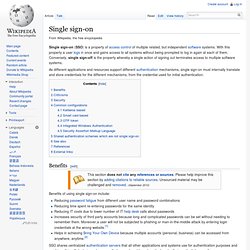
With this property a user logs in once and gains access to all systems without being prompted to log in again at each of them. Conversely, single sign-off is the property whereby a single action of signing out terminates access to multiple software systems. As different applications and resources support different authentication mechanisms, single sign-on must internally translate and store credentials for the different mechanisms, from the credential used for initial authentication.
Benefits[edit] Benefits of using single sign-on include: Reducing password fatigue from different user name and password combinationsReducing time spent re-entering passwords for the same identityReducing IT costs due to lower number of IT help desk calls about passwordsIncreases security of third party accounts because long and complicated passwords can be set without needing to remember them.
SAML 2.0. Security Assertion Markup Language 2.0 (SAML 2.0) is a version of the SAML standard for exchanging authentication and authorization data between security domains.
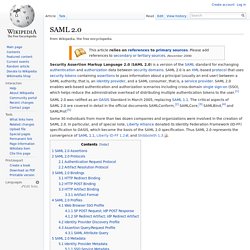
SAML 2.0 is an XML-based protocol that uses security tokens containing assertions to pass information about a principal (usually an end user) between a SAML authority, that is, an identity provider, and a SAML consumer, that is, a service provider. SAML 2.0 enables web-based authentication and authorization scenarios including cross-domain single sign-on (SSO), which helps reduce the administrative overhead of distributing multiple authentication tokens to the user.[1] Some 30 individuals from more than two dozen companies and organizations were involved in the creation of SAML 2.0. Stop Remembering Passwords And Switch To Identity Management! Chances are you’ve got a Facebook account, a Twitter account, a Google account (maybe even two), and several other accounts to cloud services you use all over the Web.
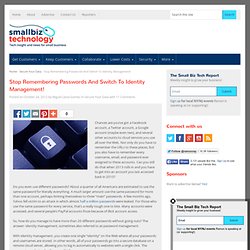
Not only do you have to remember the URLs to these places, but you also have to remember every username, email, and password ever assigned to these accounts. Can you still do that when 2013 rolls in and you have to get into an account you last accessed back in 2010? Do you even use different passwords? About a quarter of all Americans are estimated to use the same password for literally everything. A much larger amount use the same password for more than one account, perhaps limiting themselves to three “main” passwords. So, how do you manage to have more than 20 different passwords without going nuts? With identity management, you create one single “identity” on the Web where all your passwords and usernames are stored. In the user-friendliness department, SmartSignin wins again. Home.
Identity management: the expert view. Identity management has become a key issue in information security.
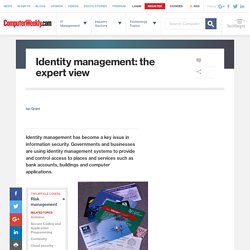
Governments and businesses are using identity management systems to provide and control access to places and services such as bank accounts, buildings and computer applications. By submitting your personal information, you agree that TechTarget and its partners may contact you regarding relevant content, products and special offers. You also agree that your personal information may be transferred and processed in the United States, and that you have read and agree to the Terms of Use and the Privacy Policy.
Identity theft is increasing. With it, the risk intensifies that not only data but an individual's privacy and reputation might be compromised. An individual's identity arises in two ways: biologically and socially. We also have a wide range of social identities. Identity management. In computing, identity management (IdM) describes the management of individual principals, their authentication, authorization,[1] and privileges within or across system and enterprise boundaries[2] with the goal of increasing security and productivity while decreasing cost, downtime and repetitive tasks.[3] The terms "Identity Management" and "Identity and Access Management" (or IAM) are used interchangeably in the area of Identity access management, while identity management itself falls under the umbrella of IT Security.[4] Identity-management systems, products, applications and platforms manage identifying and ancillary data about entities that include individuals, computer-related hardware and applications.
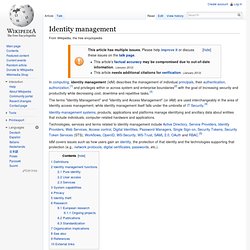
Definitions[edit] Identity management (IdM) is the task of controlling information about users on computers. Digital identity is an entity's online presence, encompassing personal identifying information (PII) and ancillary information.